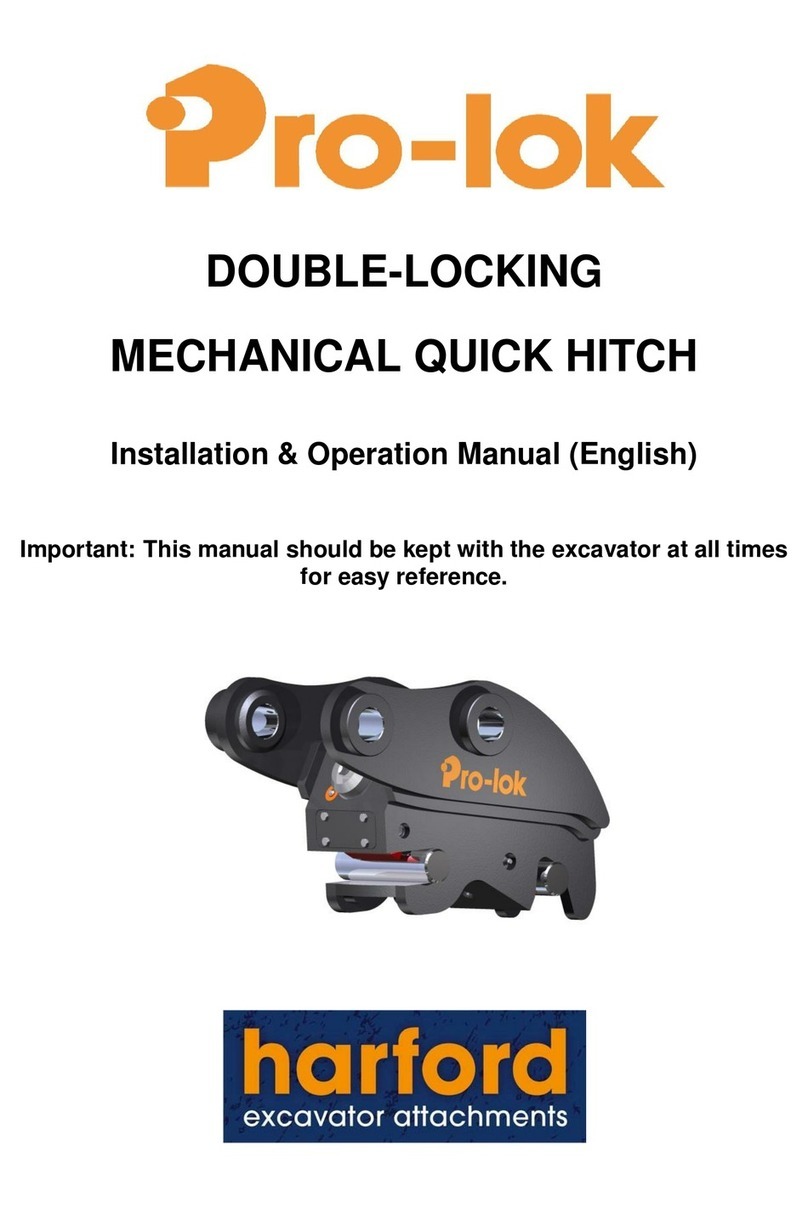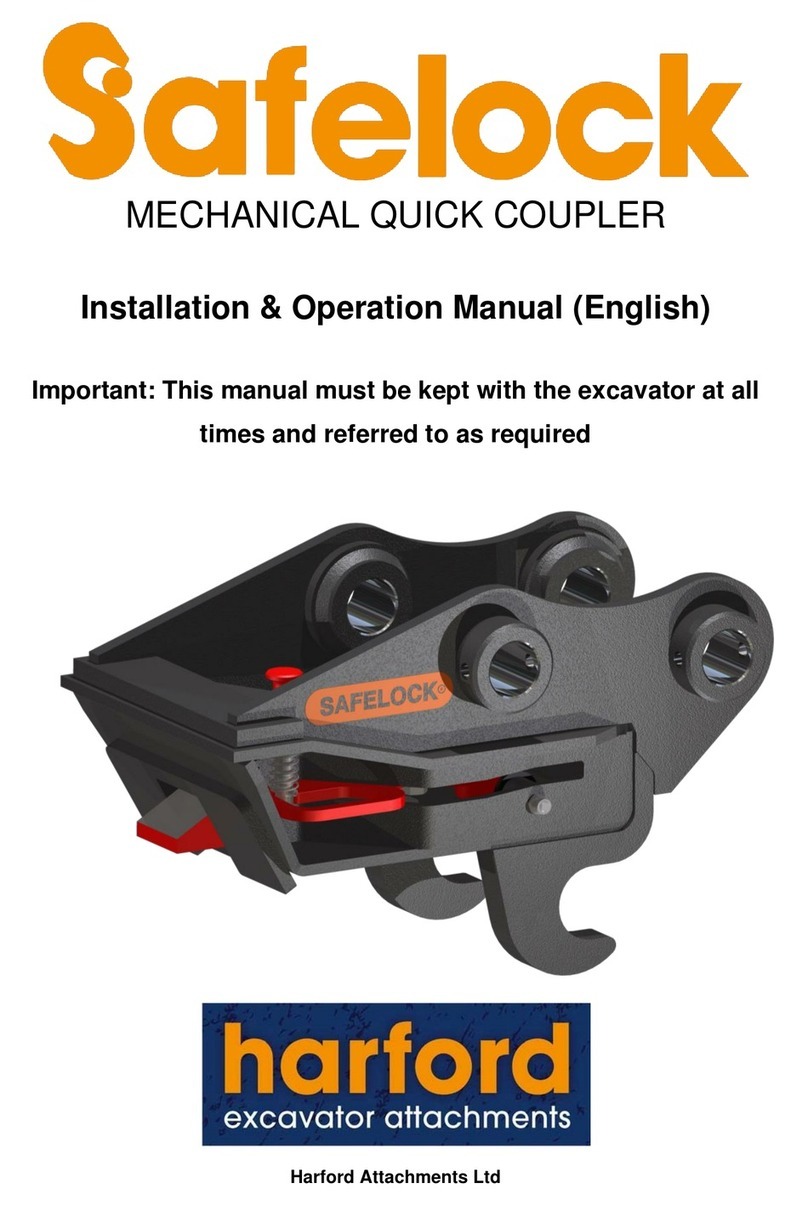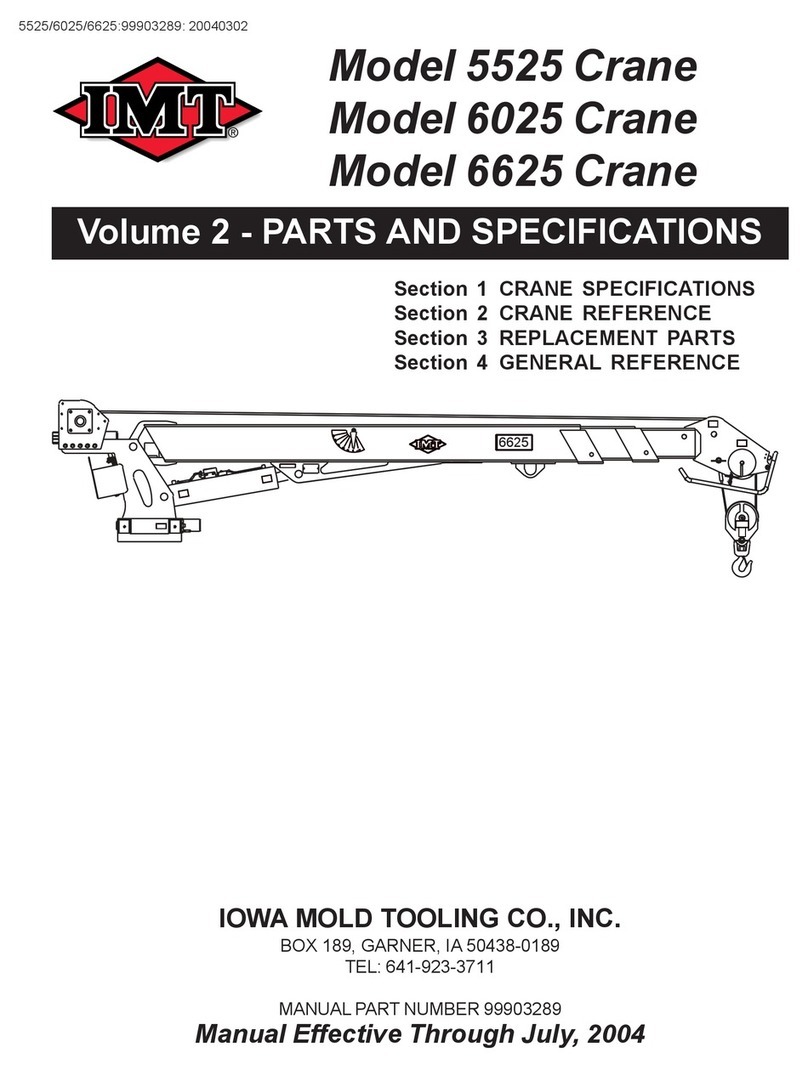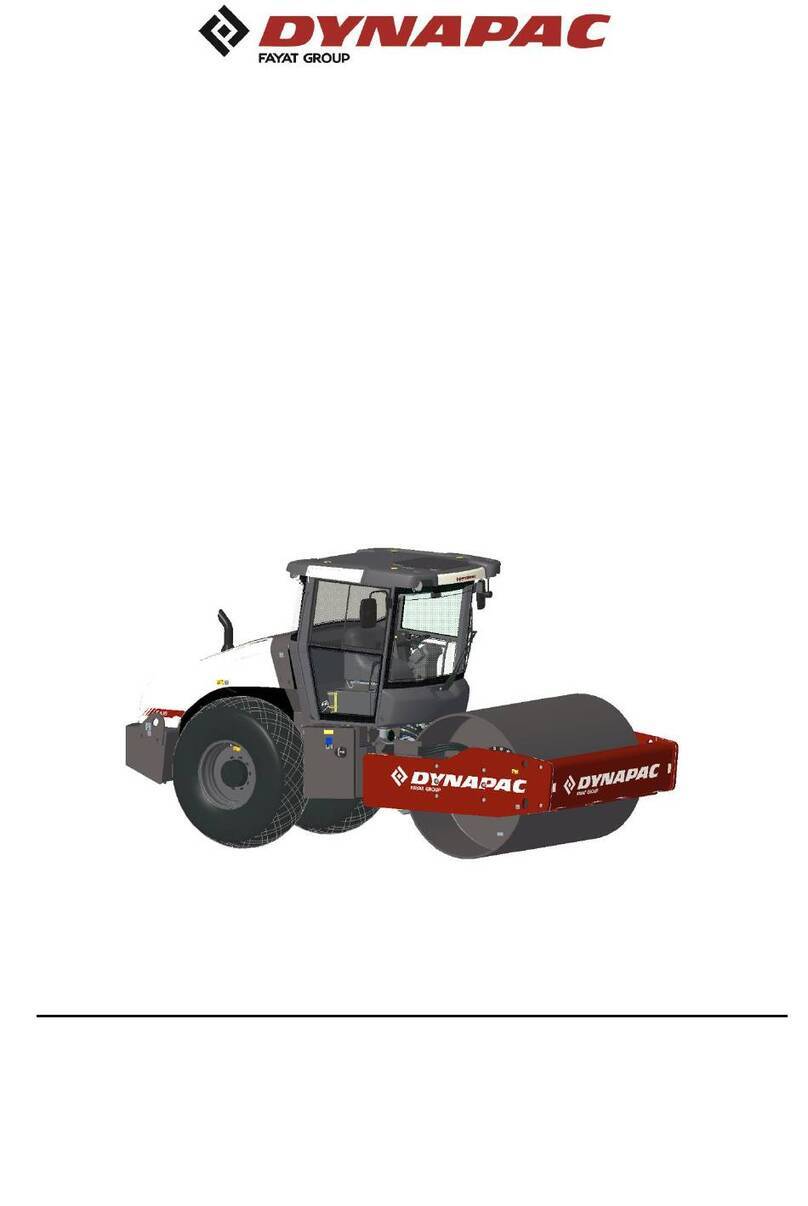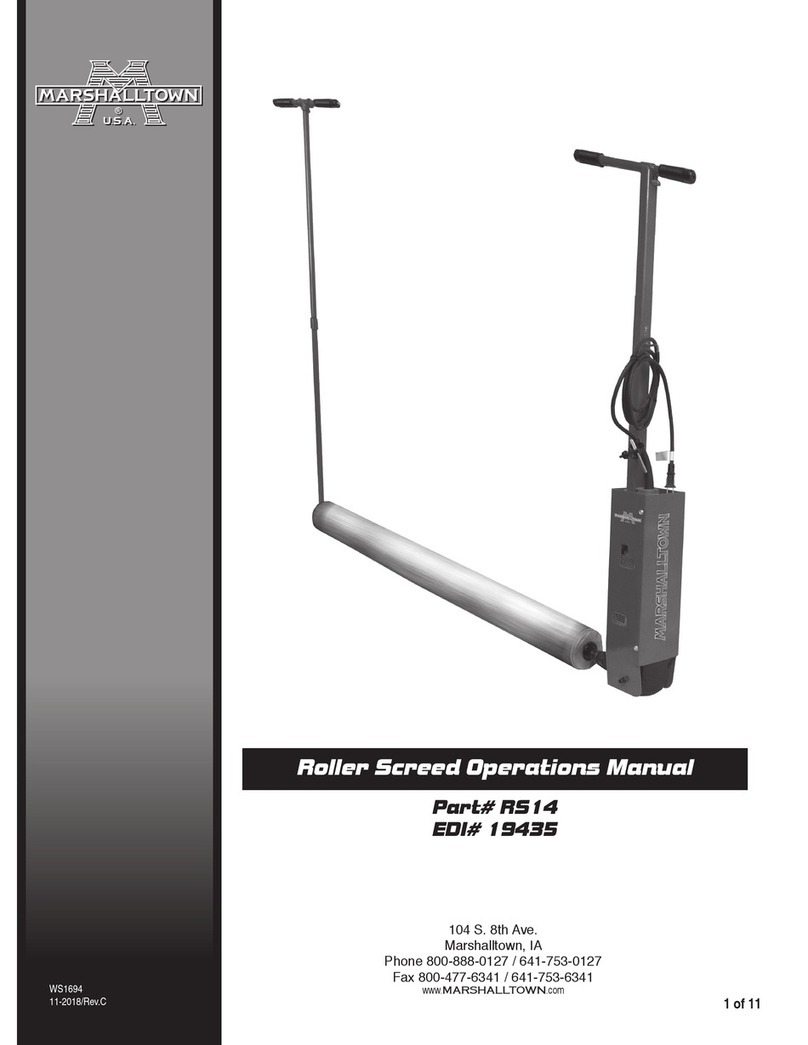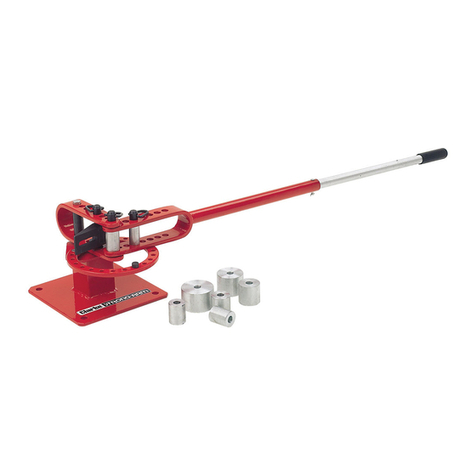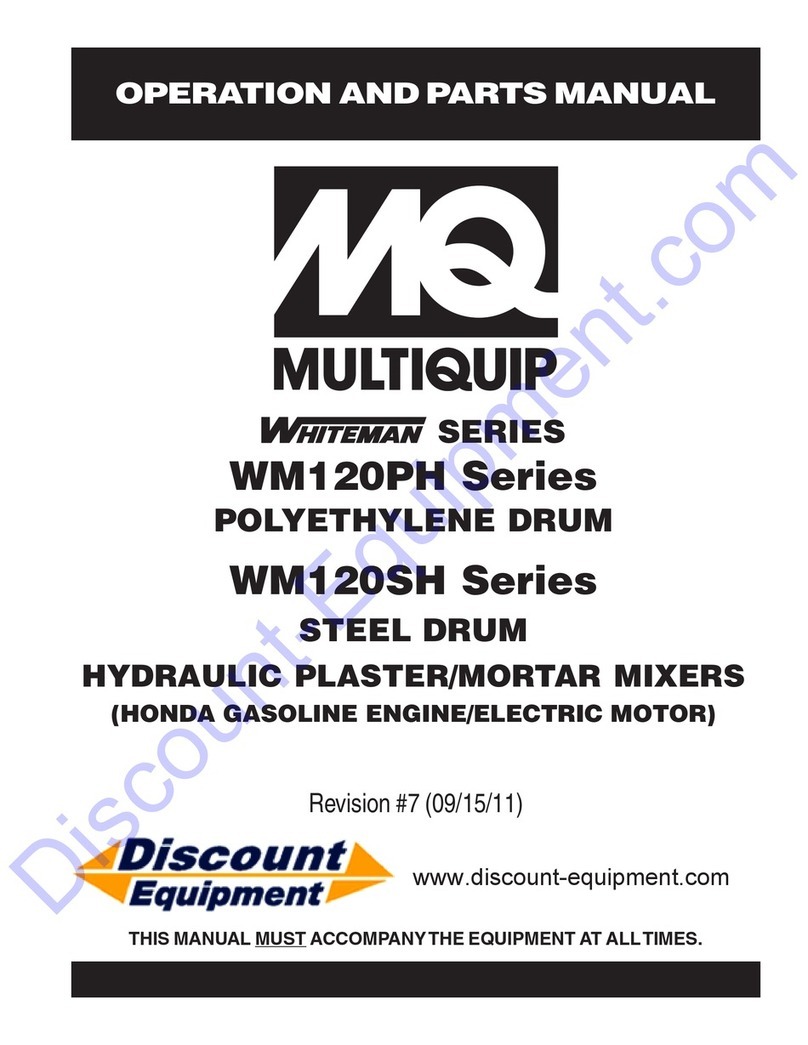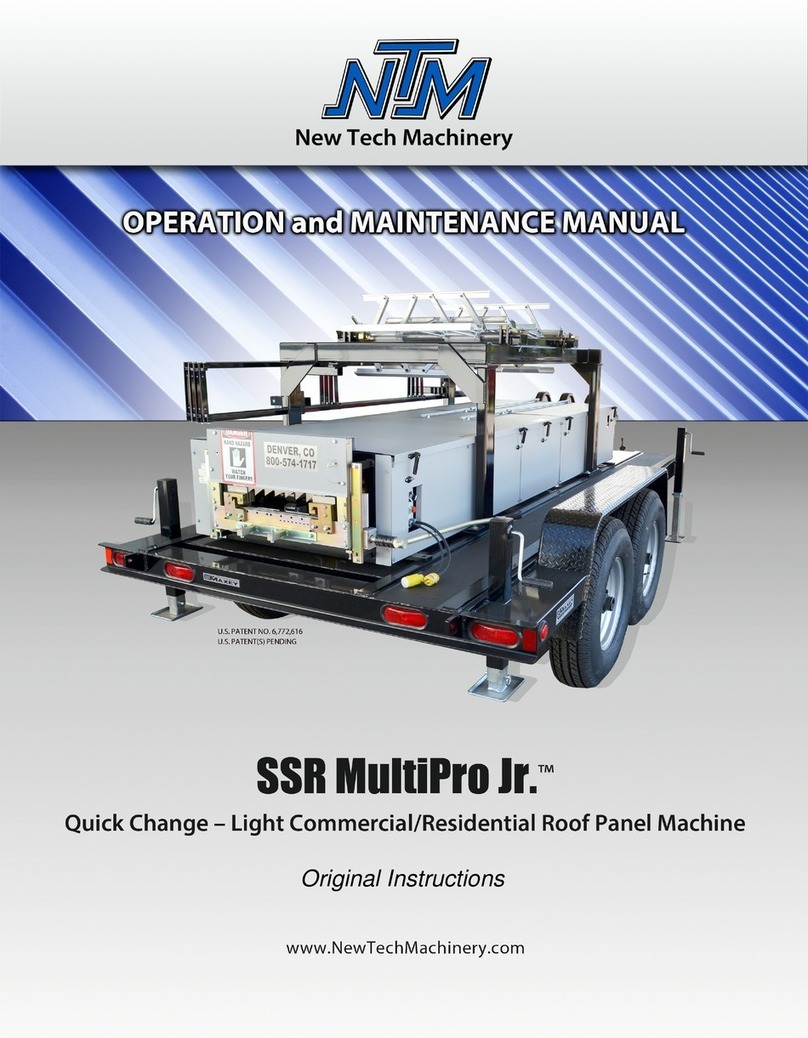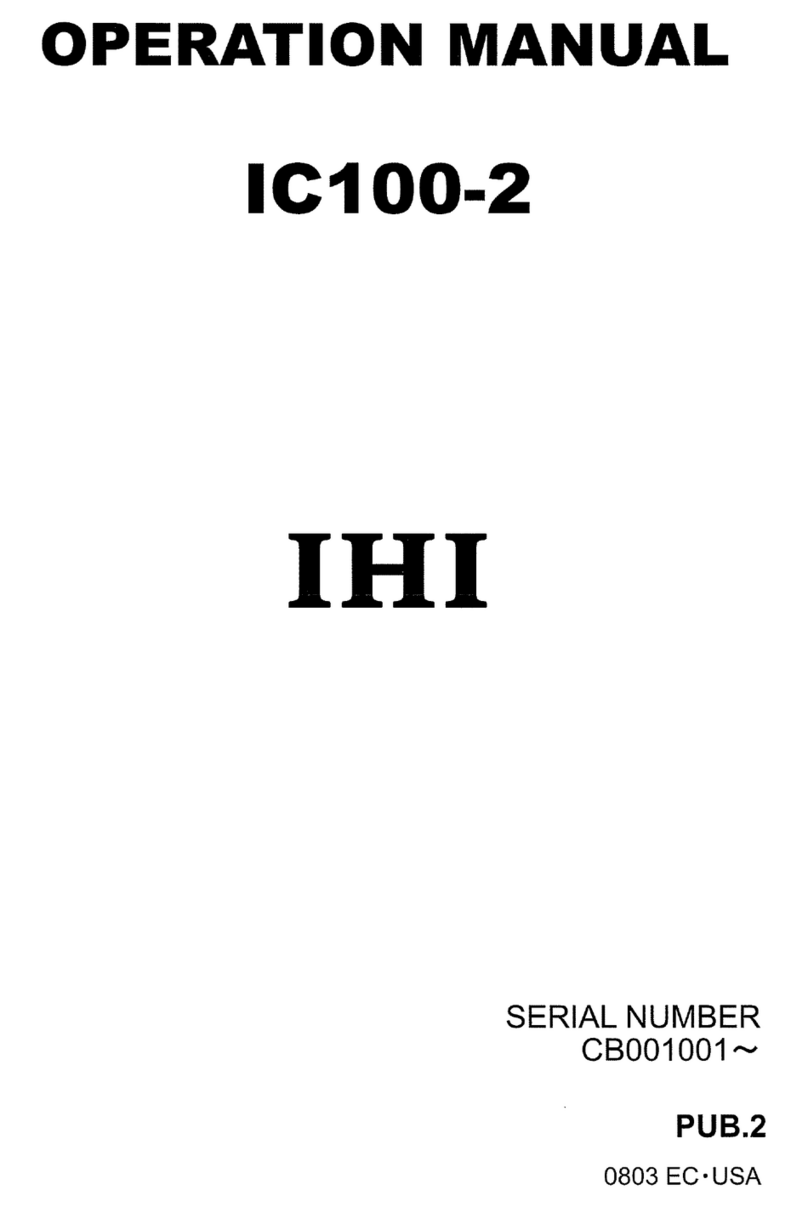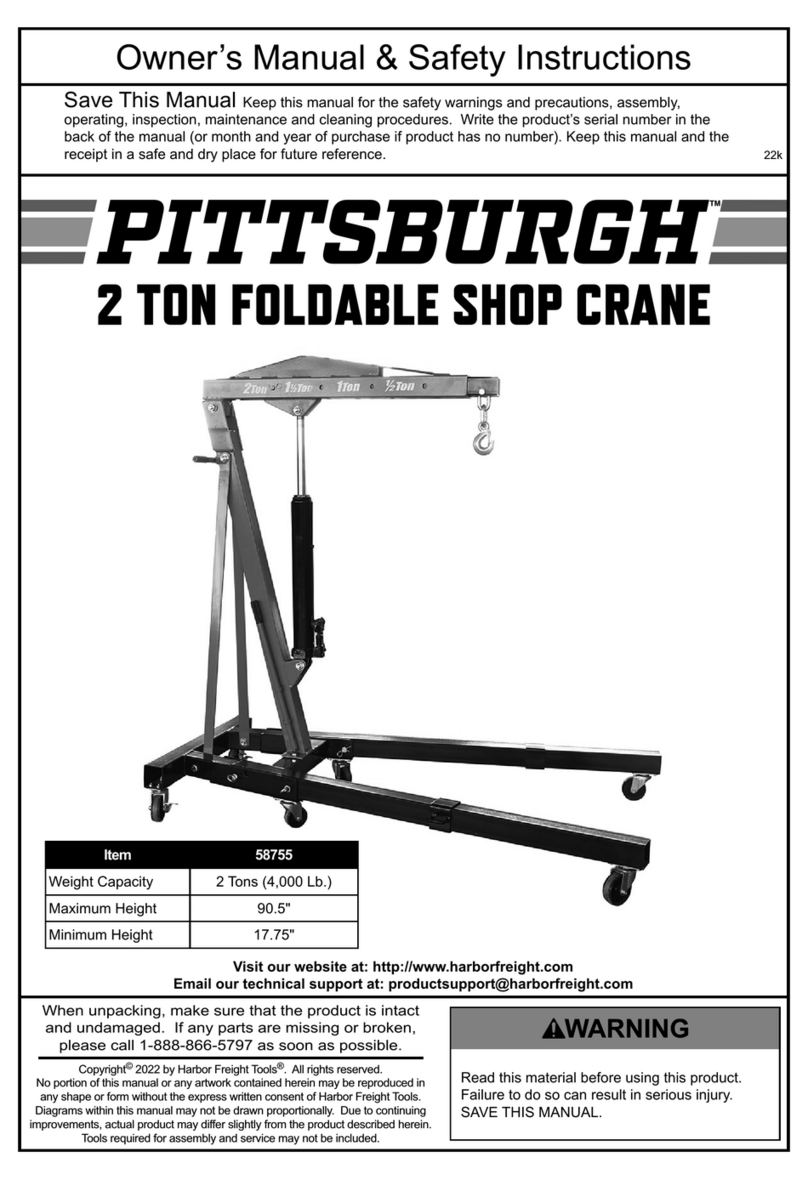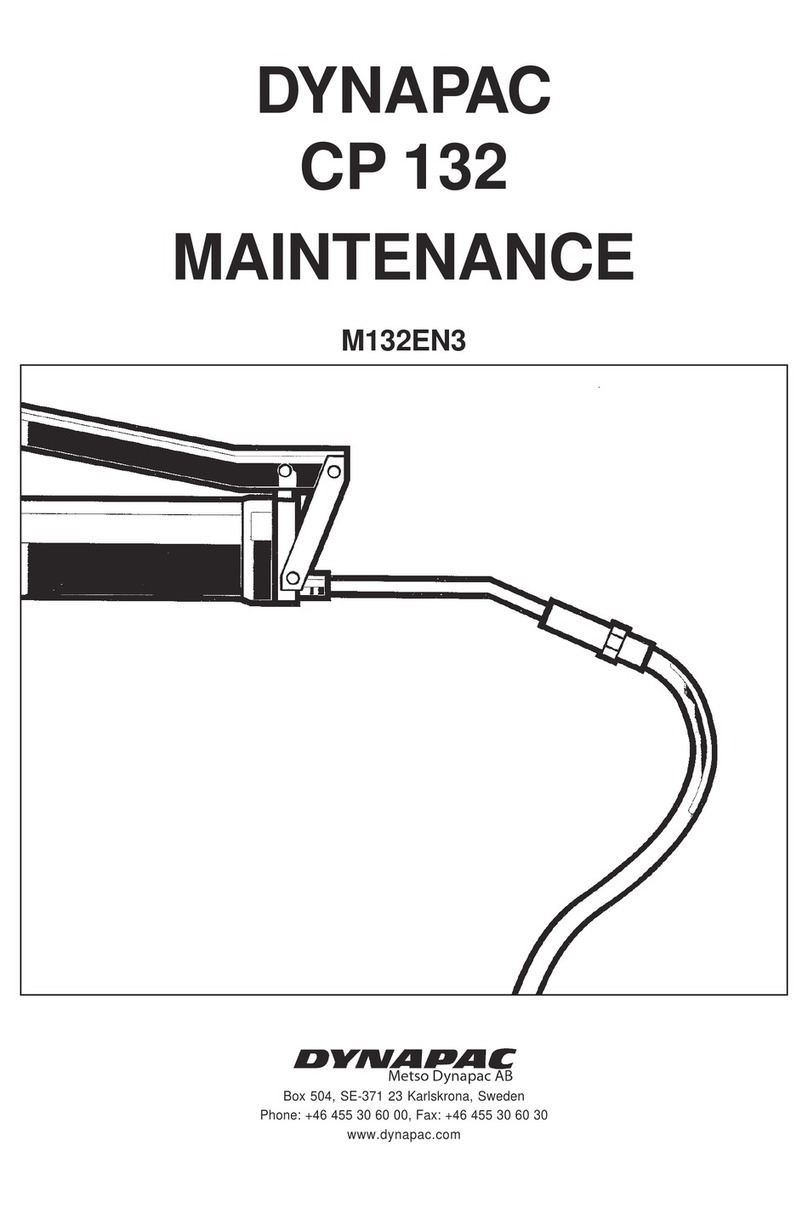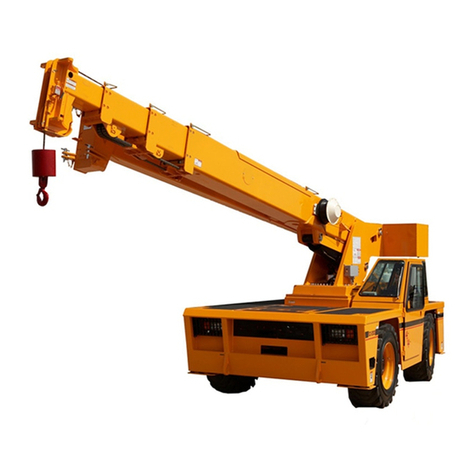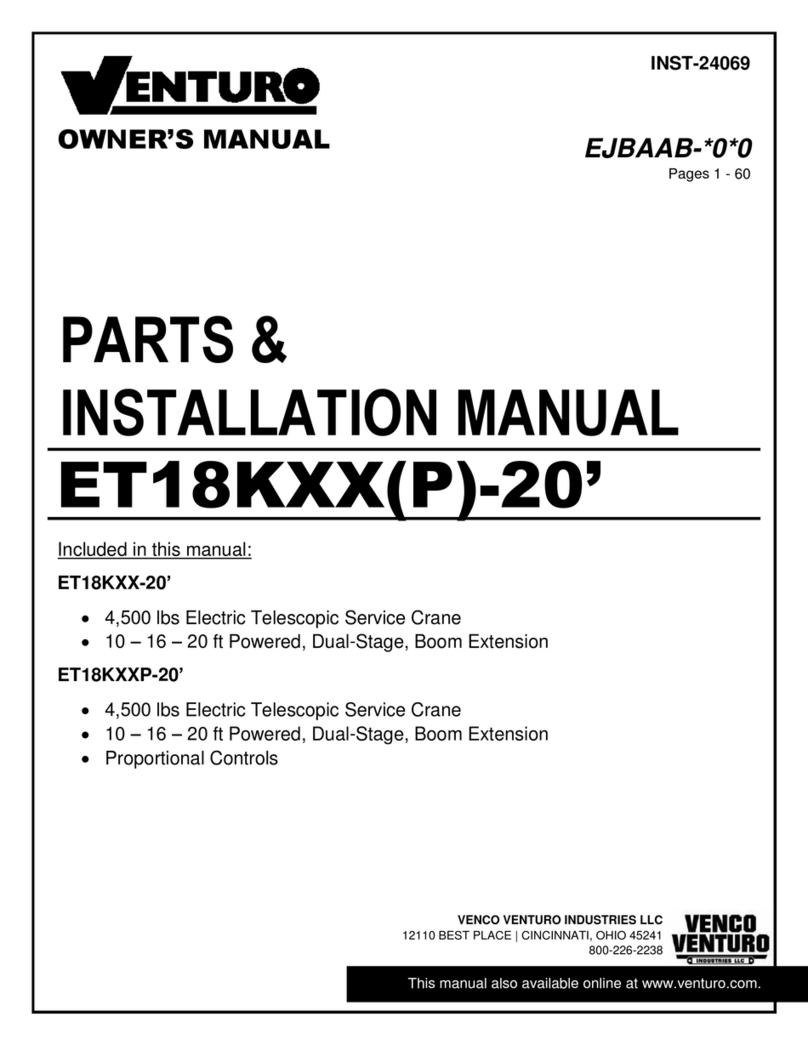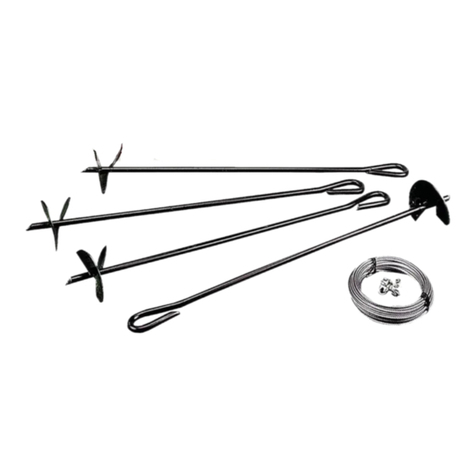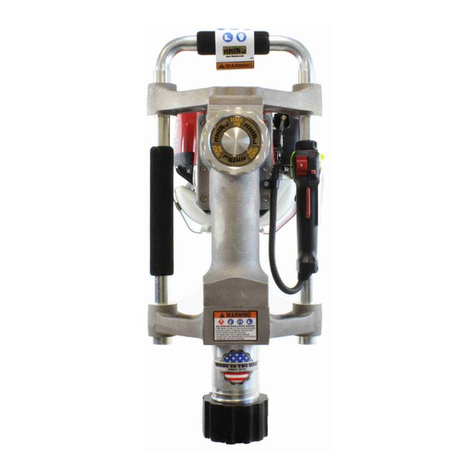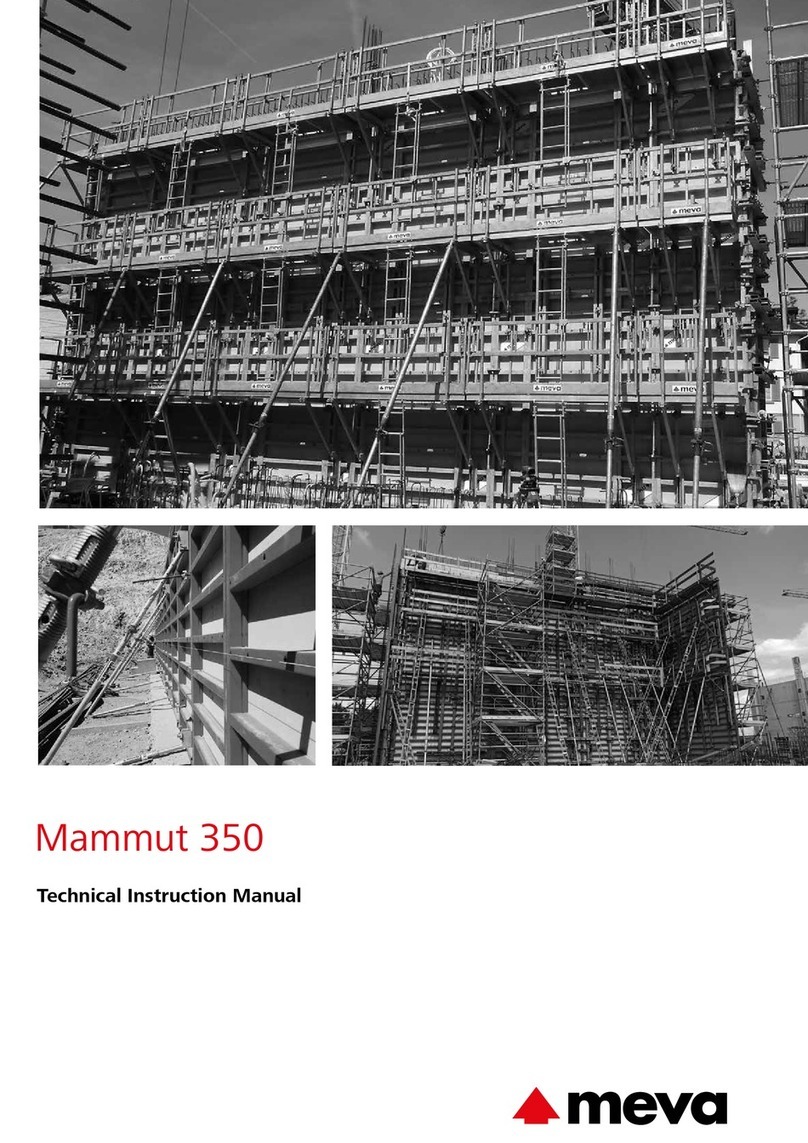Harford Attachments Pro-lok User manual

MECHANICAL QUICK HITCH
Installation & Operation Manual
Important: This manual must be kept with the excavator at all
times and referred to as required
Harford Attachments Ltd

1
PLM/MAN15/Rev 3A
Table of Contents
Item Checklist Page 1
Introduction Page 2
Safety features Page 2
Fitting the quick hitch to the excavator Page 3
Connecting an attachment Page 4
Releasing an attachment Page 6
Lifting a load Page 6
Adjusting the threaded actuator Page 7
Maintenance/Warranty Page 8
Item Checklist
The following items are supplied.
Item Supplied
Mechanical quick hitch
CE Declaration of Conformity
Ratchet
Installation and operation manual
Safety pin not required stickers
Warning label
Lifting eye test certificate see note
Note
The lifting eye test certificate is only supplied if a lifting eye is fitted to the quick hitch at
manufacture.
If at any time in the future, you require additional information on the
HARFORD PRO-LOK quick hitch or any aspects of its use, please do not hesitate to contact:
Harford Attachments Ltd
Spar Road, Norwich. NR6 6BY. England
Tel +44 (0) 1603 403099 Fax +44 (0) 1603 402399
email: info@harfordattachments.co.uk website: www.harfordattachments.co.uk

2
PLM/MAN15/Rev 3B
Introduction
Thank you for choosing to purchase the Harford Pro-Lok quick hitch for excavators. The
information contained in this manual should be thoroughly read and understood by all
operators of this quick hitch.
The Harford Pro-Lok quick hitch is designed to attach to standard OEM specification
attachments of the excavator. The adjustable sliding wedge plate provides a locking device,
which is free from movement. This results in minimal wear over time.
Several features are built into this particular quick hitch, all of which contribute to making it
safe and reliable.
Due to the large number of excavator makes and models available worldwide, it is not possible
to provide installation instructions that will cover every situation. It is, therefore, extremely
important that the installation be carried out by properly skilled persons, preferably with past
quick hitch installation experience.
It is essential that the operation and maintenance instructions are followed carefully to ensure
safe and reliable operation of the quick hitch at all times. Failure to do so could result in
serious injury and invalidate warranties.
This manual contains the installation and operation instructions for the mechanical Harford
Pro-Lok quick hitch. If the quick hitch you are about to fit or operate is not the Pro-Lok,
please refer to the separate manual.
IMPORTANT:
This quick hitch has undergone CE certification by Harford Attachments. Any
modification could invalidate this certification and therefore new certification would be
required.
Safety features
There are several important safety features that are an integral part of the Harford Pro-Lok
Mechanical quick hitch. Each feature further removes the possibility of inadvertently
disengaging attachments that are connected to the quick hitch.
1. The wedge plate is tightened the same way as a bolt (e.g. clockwise rotation).
2. There is a patented anti-unwind feature built into the threaded actuator. This can easily be
adjusted to ensure firm rotation during maintenance.
3. The geometry of the wedge plate and quick hitch locking surface creates a locking
mechanism in its own right. The clamping force of the wedging surface is up to 4.5 times
the force applied by the threaded actuator. This feature creates an extremely positive and
safe locking device.
4. A sprung loaded front lock ensures that the front pin is secure when connecting an
attachment and during operation. This is visible from the cab.
5. A rear lock indicator allows the operator to check that the rear locking wedge is in its
correct operating position. This is visible from the cab.

3
PLM/MAN15/Rev 3B
Fitting the quick hitch to the excavator
SAFETY NOTICE:
It is recommended that safety gloves are worn during the installation of the quick hitch.
1. Remove any existing attachment from the machine dipper arm and crowd link arm. The
two original pins that are removed from these pivot points must be used to attach the quick
hitch to the excavator (These pins are usually hardened and greasable).
2. Carefully align the dipper arm between the two front bosses on the hitch as shown in
diagram 1. Replace any ‘O’ rings that were removed previously and slide one of the
original pins through the quick hitch and dipper arm. Securely fix the pin in place by using
the original or supplied retention method. Ensure any retention bolts are tightened using
double nuts to lock against each other.
3. Repeat step 2 with the crowd link arm linkage.
4. Grease the two pins and visuallycheck that theyare located and secured correctly.
5. Use the excavator hydraulics to carefully rotate the quick hitch to the extremes of the crowd
cylinder (e.g. no stroke and full stroke). Check the clearance of the quick hitch with any
part of the dipper arm and linkage.
6. Fit the supplied yellow warning sticker in the cab in a prominent position. Also supplied are
three ‘safety pin not required’ stickers – one to be fitted in the cab in a prominent position
and one each side of the dipper arm near to the quick hitch.
7. Medium tensile pins (or better) should be used in both pin location holes of the attachment.
Visually check to ensure the pins are correctly fitted and are secure before the attachment
is used. Ensure any retention bolts are tightened using double nuts to lock against each
other.
Diagram 1
Crowd Cylinder
Idler Link
Crowd Link
Quick Hitch
Original Pins
Dipper
Arm

4
PLM/MAN15/Rev 3B
Connecting an attachment
SAFETY NOTICE:
It is recommended that safety gloves are worn during the attachment changeover
operation.
1. Lower the quick hitch front ‘C’ shaped jaw down towards the front attachment pin as shown
in diagram 2, step 1.
2. Engage ‘C’ shaped jaw with front attachment pin as shown in diagram 2, step 2.
3. Extend the crowd cylinder down towards the rear attachment pin and lift the attachment at
the same time as shown in diagram 2, step 3.
4. Keep extending the crowd cylinder so the front attachment pin is firmly seated in the “C”
shaped jaw and the rear pin is seated onto the rear locking surface as shown in diagram 2,
step 4.
5. Use the ratchet spanner to rotate the threaded actuator in a clockwise direction until the
wedge plate is fully tightened against the rear attachment pin.
6. Visually check that the locking wedge plate is securely located against the rear attachment
pin and that the front lock is closed. Also ensure that the indicator bar is in its correct
operating position as shown by diagram 3.
Diagram 2
Step 2
– Engage ‘C’ shaped
jaw with front attachment pin
Step 3
– Crowd quick hitch to
engage with rear attachment pin
Step 4
– Crowd bucket until rear pin
is much lower than attachment pin
Front bucket pin Rear bucket pin
Step 1
– Lower quick hitch to
front attachment pin

5
PLM/MAN15/Rev 3B
Diagram 3
Correct operating position
Diagram 4
Incorrect operating position
Diagram 5
Releasing an attachment position

6
PLM/MAN15/Rev 3B
WARNING:
During operation there should be no movement between the quick hitch and
attachment. If any movement is detected, stop operation immediately, lower
attachment to the ground and inspect the hitch.
WARNING
:
The quick hitch extends the length of the dipper arm and some attachments may hit
the cab or boom in certain positions.
WARNING
:
The quick hitch is designed to accept attachments which are manufactured to OEM
specifications and capacities. Oversized attachments could be hazardous when used
with this quick hitch and could invalidate any warranties.
WARNING
:
Ensure the Safe Working Load of the excavator is not exceeded. Refer to the
excavator manufacturer’s information.
IMPORTANT:
If hammers are to be used for long periods of time the quick hitch should be removed
to prevent unnecessary wear.
IMPORTANT:
The use of pallet forks with this quick hitch is not permitted
Releasing an attachment
1. Place the attachment on level ground or in a position so that once released the attachment
cannot roll away from the hitch. Ensure people and property are well clear of the immediate
area.
2. Use the ratchet spanner to rotate the threaded actuator in an anti-clockwise direction until
the rear wedge plate is fully retracted and front lock fully open as shown by diagram 5.
3. Using the crowd cylinder of the excavator, rotate the quick hitch away from the rear pin of
the attachment and then lift away from the front attachment pin.
Lifting a load
IMPORTANT:
This section only applies to quick hitches that are manufactured with a lifting eye.
1. Ensure that the load to be lifted does not exceed the safe working load of the lifting eye.
2. The lifting eye is designed to be used with a lifting shackle with the same safe working load
rating.
3. Release the attachment from the quick hitch prior to using it to lift load.
IMPORTANT:
Ensure the safe lifting capacity of the excavator is not exceeded. Refer to excavator
manufacturer’s information.

7
PLM/MAN15/Rev 3B
Adjusting the threaded actuator
The rotational resistance of the threaded actuator must be firm at all times. This is a safety
feature that further enhances the positive locking mechanism built into the Harford Pro-Lok
mechanical quick hitch. This resistance can easily be adjusted using standard tools.
1. Disconnect the attachment from the quick hitch.
2. Remove the wedge plate from the quick hitch by rotating the threaded actuator in a
clockwise direction until the two parts disconnect.
3. Remove the two bolts retaining the protective shroud over the threaded actuator.
4. Slide the shroud off the threaded shaft and remove completely.
5. Using an Allen key, loosen the cap screws in the split nut.
6. Place the ratchet spanner in the square drive and rotate the split nut anti-clockwise (L.H.
Thread) until it tightens up firmly against the thrust washers.
7. Clamp the split nut against the threaded shaft by tightening up the cap screws.
8. Check the tightness of the threaded actuator. You should only be able to rotate the
actuator with the ratchet spanner, not by hand.
9. Re-assemble and grease, see maintenance page 8 steps 3 and 4.
WARNING:
Ensure wedge plate is fully retracted before greasing.
Diagram 6
(This is a typical assembly, your version may vary slightly)
ITEM
DESCRIPTION
1 L.H. Thread
2 2 x DU Washer
3 DU Bush
4 2 x Hex. Head Bolt
5 Front Plate
6 2 x Cap Screw
7 L.H. Split Nut
8 Shroud
9 2 x Grease Nipple
10 Shroud Seal
11 2 x Spring Washer
12 2 x Hex. Nut
13 Pan Head Screw
14 Red Sleeve
15 Wedge Assembly

Appendix 1
8
PLM/MAN15/Rev 3B
Maintenance
SAFETY NOTICE:
It is recommended that safety gloves and glasses are worn during the maintenance of
the quick hitch. Daily
1. Clean away any material build up around the front lock, indicator bar and wedge.
2. Check all pin retaining bolts and nuts for tightness on quick hitch and attachments.
3. Grease as required wedge slide housing points. It is necessary to remove attachment to
gain access to a grease nipple on the underside of the hitch.
4. Grease as required threaded actuator points
WARNING:
Ensure wedge plate is fully retracted before greasing.
5. Check quick hitch for correct operation by connecting an attachment.
6. Check that the threaded actuator is firm to rotate in its housing. Adjust as required, see
adjusting the threaded actuator page 7.
7. Check quick hitch for evidence of fatigue, weld failure or stress.
WARNING:
If the hitch should be damaged in any way and there is any doubt as to the continued
safety of the product please contact Harford Attachments Ltd, Technical Department
on +44 (0) 1603 403099.
Warranty
Harford Attachments Ltd (the seller) warrants their quick hitches as follows:
1. The seller shall repair or replace at the seller’s option any of the goods which are, or which
become, defective within 12 months from delivery due to faulty workmanship, materials or
faulty design if the seller is responsible for design, provided that the buyer shall have
notified the seller in writing of such defect and have given the seller a reasonable
opportunity to inspect the defective goods.
2. All expenses incurred by the seller in connection with the repair or replacement of the
defective goods, including all costs of transportation, shall be paid by the seller.
3. If the seller shall fail to so repair or replace the defective goods within reasonable time of
having been notified by the buyer, then the buyer shall be entitled to have the work of
repair or replacement carried out by others, and the seller shall pay to the buyer the costs
reasonably incurred to the buyer in so doing.
4. The seller’s liability in respect of defects in the goods shall be limited to those stated in this
clause and subject to Clause 2(1) of the Unfair Contract Terms Act 1997, the seller shall
not be liable whether in contract or in tort, including but not limited to negligence, or by
reason of breach of statutory duty or otherwise, for any damage or loss whatsoever
suffered by the buyer arising out of or attributable to such defects.
Other manuals for Pro-lok
1
Table of contents
Other Harford Attachments Construction Equipment manuals
